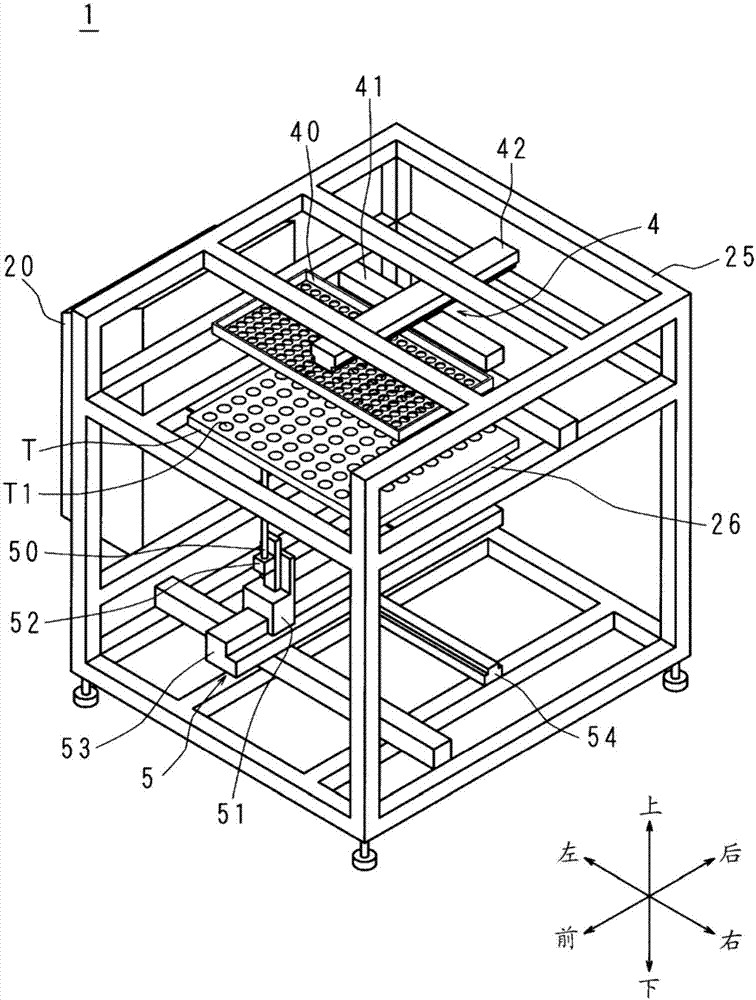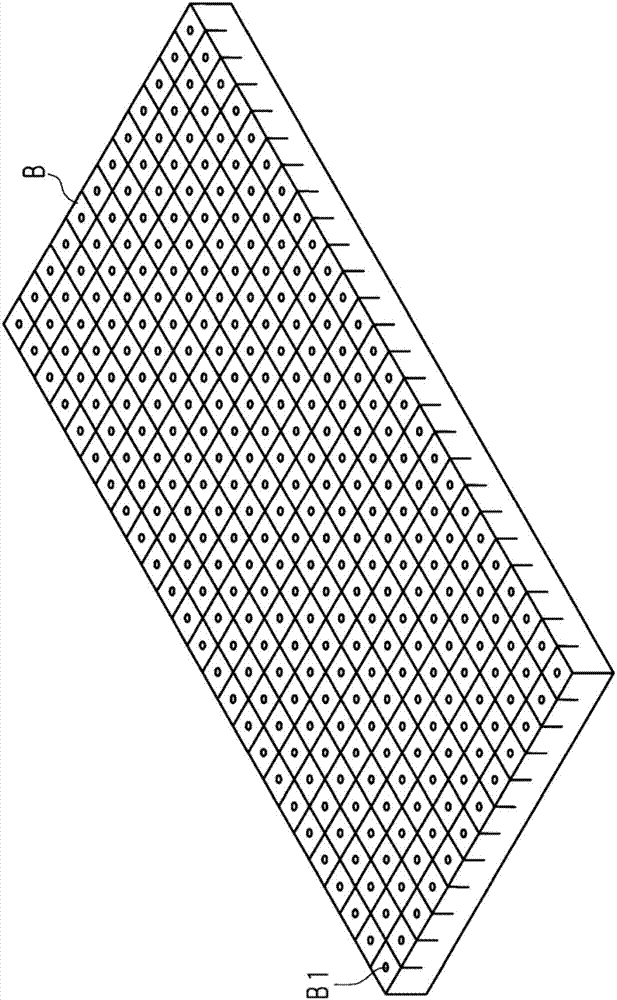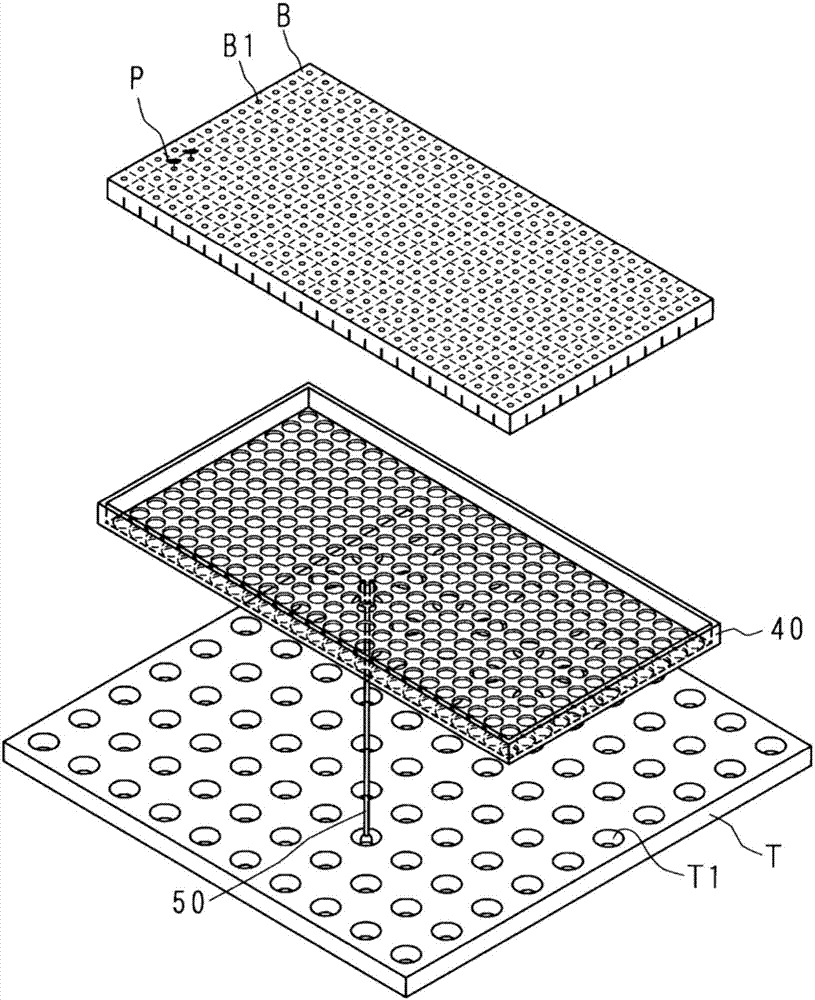Transplant device, transplant system, transplant method, and computer program
A communication device and plant technology, applied in the fields of transplantation systems, transplantation methods and computer programs, can solve the problems of difficult quality maintenance, homogenization and high cost of sorting standards
- Summary
- Abstract
- Description
- Claims
- Application Information
AI Technical Summary
Problems solved by technology
Method used
Image
Examples
Embodiment approach 1
[0120] figure 1 It is a perspective view showing the transplantation device 1 of the first embodiment. In the instructions below, use figure 1 The arrows in the arrows represent up and down, front and rear, and left and right.
[0121] The transplanting device 1 includes a frame 25 for holding the cultivation plate T, a holder transfer unit 4 for transferring the holder 40 of the culture medium, a transplant arm drive unit 5 for driving the transplant arm 50, and a transfer unit 4 to the holder respectively. and the transplant control unit 20 (in the figure 1 , expressed as outer box).
[0122] The frame 25 is constituted by a plurality of pillars and a plurality of horizontal frame members connecting the pillars through the upper part and the lower part. A guide frame is erected at the center of the frame 25 in the front-rear and left-right directions, and a support plate 26 is horizontally attached to the guide frame. The cultivation board T is fixed on the support plat...
Embodiment approach 2
[0171] In the second embodiment, a cultivation plate T2 containing 150 (=15×10) holes is used. The size and number of divisions of culture medium B are the same as those in Embodiment 1. Therefore, in Embodiment 2, transplantation from one culture medium B to two cultivation plates T2 is performed as one treatment.
[0172] The processing sequence based on the transplantation device 1 in the second embodiment is the same as that in the first embodiment Figure 5 The processing sequence is the same as shown in the flowchart. In Embodiment 2, since the cultivation board T2 is different from Embodiment 1, the transplanting sequence pre-written in the transplantation program 2P according to the number and size of holes in the cultivation board T2 is different from Embodiment 1.
[0173] The transplantation sequence of Embodiment 2 will be described in detail. Figure 18 It is an explanatory diagram showing the transplanting order i assigned to the wells of the cultivation plate...
Embodiment approach 3
[0182] In Embodiment 3, a cultivation plate T3 containing 98 (=14×7) holes is used. The size and number of divisions of culture medium B are the same as those in Embodiment 1. In Embodiment 3, transplantation to all the wells of the plurality of cultivation plates T3 cannot be satisfied with one medium B. However, since the number of seedbeds of the medium B is about three times the number of holes in the cultivation plate T3, transplantation from one medium B to three cultivation plates T3 is treated as one process in the same manner as in the first embodiment. implement. The remainder can be used for another cultivation board T3 or can be used instead of a poorly grown seedling.
[0183] The processing sequence based on the transplantation device 1 in the third embodiment is the same as that in the first embodiment Figure 5 The processing sequence is the same as shown in the flowchart. In Embodiment 2, since the cultivation board T3 is different from Embodiment 1, the c...
PUM
 Login to View More
Login to View More Abstract
Description
Claims
Application Information
 Login to View More
Login to View More - R&D
- Intellectual Property
- Life Sciences
- Materials
- Tech Scout
- Unparalleled Data Quality
- Higher Quality Content
- 60% Fewer Hallucinations
Browse by: Latest US Patents, China's latest patents, Technical Efficacy Thesaurus, Application Domain, Technology Topic, Popular Technical Reports.
© 2025 PatSnap. All rights reserved.Legal|Privacy policy|Modern Slavery Act Transparency Statement|Sitemap|About US| Contact US: help@patsnap.com



